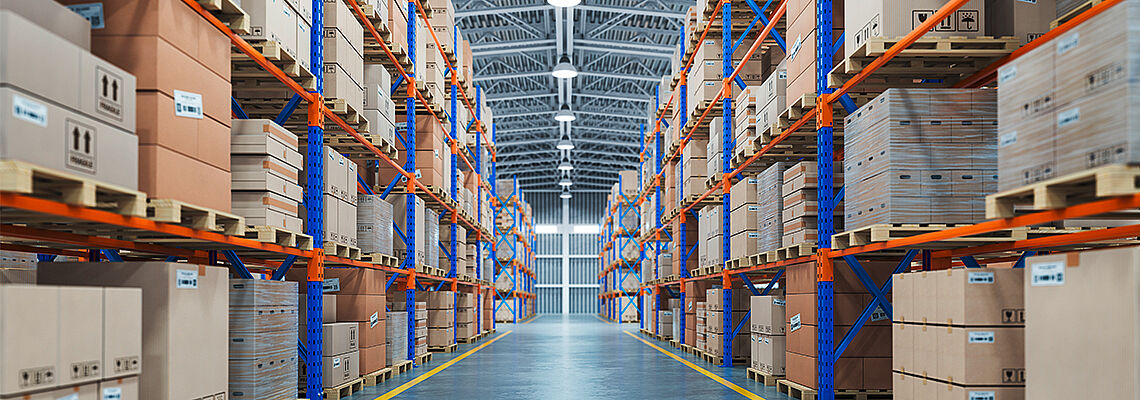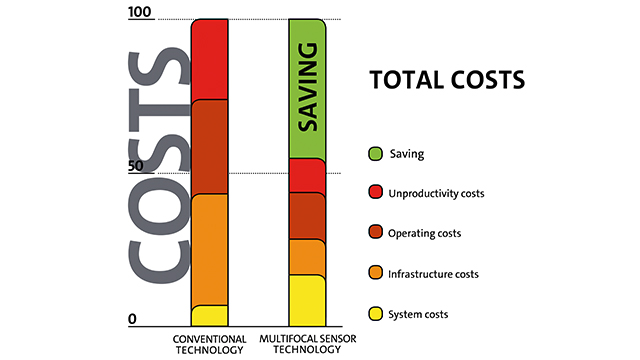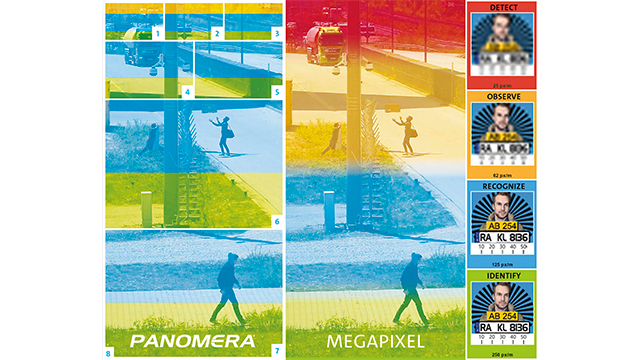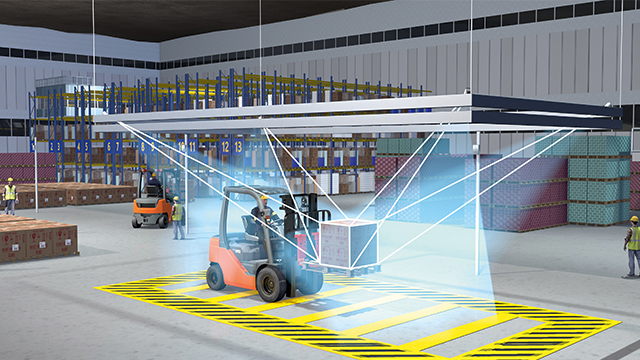Newsletter
Exclusive expert tips, customer stories and more.

The video security technology market is in a state of constant flux. Today, the attention of the industry is trained on added values beyond pure image capture. These include for example the analysis techniques based on Computer Vision, which users can use to optimise not only security issues but also business processes. From a pure cost factor, video technology in the logistics sector is increasingly becoming a “business enabler“, i.e. a pathfinder for successful business activity and new business fields. And this in turn places the matter of the overall costs of operating a system firmly at the centre of deliberations. For this reason, any company is well advised not to lose sight of the “Total Cost of Ownership“ (TCO), or be distracted by apparently low-priced single components.
Whether in private life or in the B2B area, the same principle applies: Just because a product is inexpensive, this does not necessarily mean it is also economical to operate. A “Total Cost of Ownership“ analysis helps to take into consideration the lifecycle of a total video security solution with all associated costs, including the costs of planning, installing and operating all involved components. Many users then discover to their astonishment that the number of cameras needed has much further implications, way beyond the costs of procuring the individual components, but also a whole range of subsequent costs.
Every video security solution is different. For example, when monitoring the interior of a logistics hall – especially if analysis functions such as package tracking are to be realised – completely different requirements arise than when monitoring the perimeter. Nevertheless, despite the abundance of possibilities, the same requirements always arise: Areas or distances must be monitored, and depending on the application, with a certain resolution that must not be undercut. This resolution density is defined in the globally valid standard DIN EN 62676-4. For example, 250 pixels per metre (px/m) are necessary to identify unknown persons; in contrast, 62.5 px/m are usually sufficient for the classification of objects such as persons or vehicles.

PTZ (pan, tilt and zoom), megapixel and also multi-sensor cameras face a challenge here: megapixel and multi-sensor cameras usually do not offer criminally usable detail resolution in the middle and rear image areas during zoom operations – or must be mounted in an uneconomically high number. With PTZ systems, the operator loses the overview of the scene, as he usually concentrates on a single image section. Moreover, PTZ cameras are only useful in “live“ observation.
The problem is similar for analysis applications: Since megapixel or multi-sensor systems lose enormous resolution in depth, the result of any analysis is an extremely heterogeneous data quality for the different areas of an object space. PTZ systems, on the other hand, are not suitable for analysis by definition, as they are always in motion and capture ever-changing sub-areas of the object space. According to the data processing principle “Garbage In – Garbage Out“, the analysis of a video image is only as good as the quality of the input data. In order to be able to carry out a meaningful video analysis, the essential criterion is an equally high minimum resolution over the entire object space, which ideally can be precisely defined right from the planning stage and is individually adapted to the respective application.
Multifocal sensor systems (MFS) are the first to address the optical dilemma of decreasing resolution in depth or distance by combining several sensors with lenses of different focal lengths, thus enabling high-resolution recording of the entire object space including the rear image areas. In this way, a minimum number of camera systems ensures the minimum resolution density required throughout, even over large areas or long distances. In this way, MFS technology creates the basis for target-oriented video surveillance or observation and reliable analysis results. The 8,800 square metres of Cologne's Cathedral Square, for example, are captured with just eight camera systems in a resolution that can be used in court. The situation is similar in the outdoor areas of logistics companies.
Depending on the area of application, a single multifocal sensor system can replace up to 24 individual cameras. Fewer systems also mean less infrastructure, such as cables and masts, less installation time or excavation work. Another cost-saving effect results from the fact that far fewer screens are needed for video observation. Assuming the usual values – one well-trained operator for a maximum of six to eight screens at a time – it is easy to see the potential for savings in operating costs or significantly improved surveillance quality. Moreover, thanks to the much better overall view provided by multifocal sensor technology, a security guard can easily keep an eye on even the largest contexts. Furthermore, in addition to infrastructure and personnel costs, the number of cameras naturally also has an impact on numerous other cost blocks such as support and maintenance.

However, it is not only the procurement and maintenance costs of the hardware that determine the economic efficiency of a video security system. The underlying software also makes a significant contribution. Modular systems and platform approaches help here, where the customer only has to license those components that he actually needs, but which are so open and expandable that they can be extended accordingly when requirements change. Solution modules for specific industries optimise the use of the respective software platform. In logistics, the possibilities range from automatic package measurement without delay to the avoidance of false alarms at the perimeter through AI-based object classification to many other analysis options such as counting people, vehicles and parking spaces or intrusion, line crossing or loitering detection and, of course, systems that can correlate video images with scanning processes and thus significantly improve the tracking and retrieval of packages. Good systems also have other elements such as maps with “active objects“ or functions for effective processing of the captured data, for example for efficient damage management. Often helpful are also interfaces to all important systems for security and building automation, such as access control, fire or intrusion detection systems. Regardless of the application, modular video management systems thus support the economic operation of video security technology.

Data protection and data security are an essential factor for economic efficiency – not only of video security systems. The penalties for DSGVO violations are now severe, not to mention the costs due to data loss and industrial espionage. Like any other networked system, modern video security systems are also potential gateways and must be protected accordingly. Decision-makers are therefore well advised to take into account the “Privacy and Security by Design“ principles enshrined in the GDPR. Last but not least, the country of origin and production of a manufacturer may well play a role here – regardless of whether it is a matter of accidentally or intentionally constructed "backdoors", transparent quality assurance, depth of development and production or the avoidance of political influence. Against this background, the label “Made in Germany“ or at least “Made in Europe“ may once again become more important.
Even if alternative technologies such as multifocal sensor systems initially appear somewhat more expensive – broken down to the individual system – they can be deployed with often significantly lower infrastructure and operating costs and support their users in better achieving security and business objectives. So also in the video surveillance market, instead of asking the manufacturer or installer the famous question about the camera price, it is worthwhile to do the maths and, above all, not to lose sight of what goal you actually want to achieve. Because in the video security industry, too, it is true: “If you buy cheap, you buy twice!“ Or in economic terms: the result or the performance divided by the effort or the price results in the economic efficiency of a system.
Do you have any questions? Or would you like to share your thoughts on this subject with us?
We welcome you to post your comments and remarks!